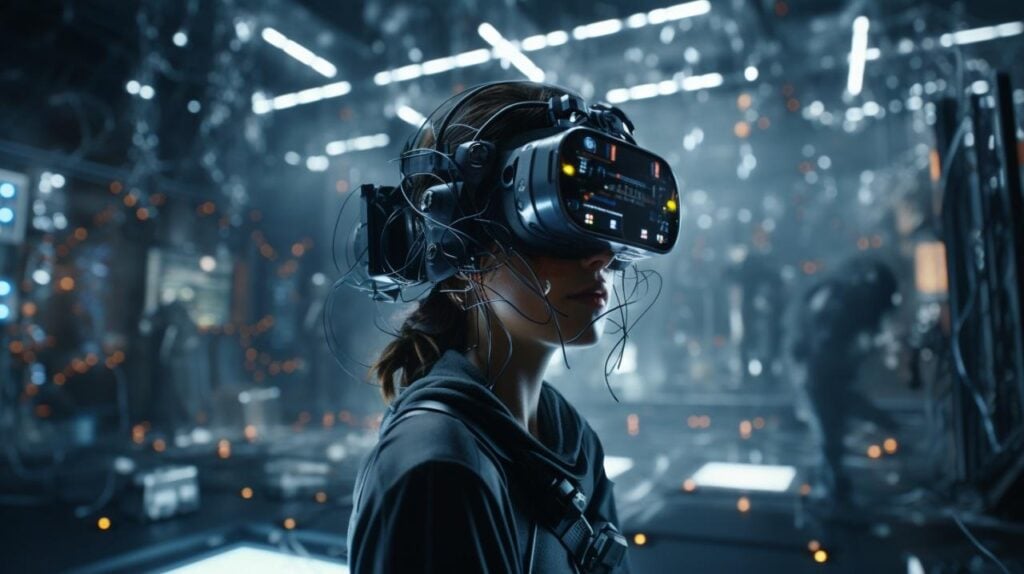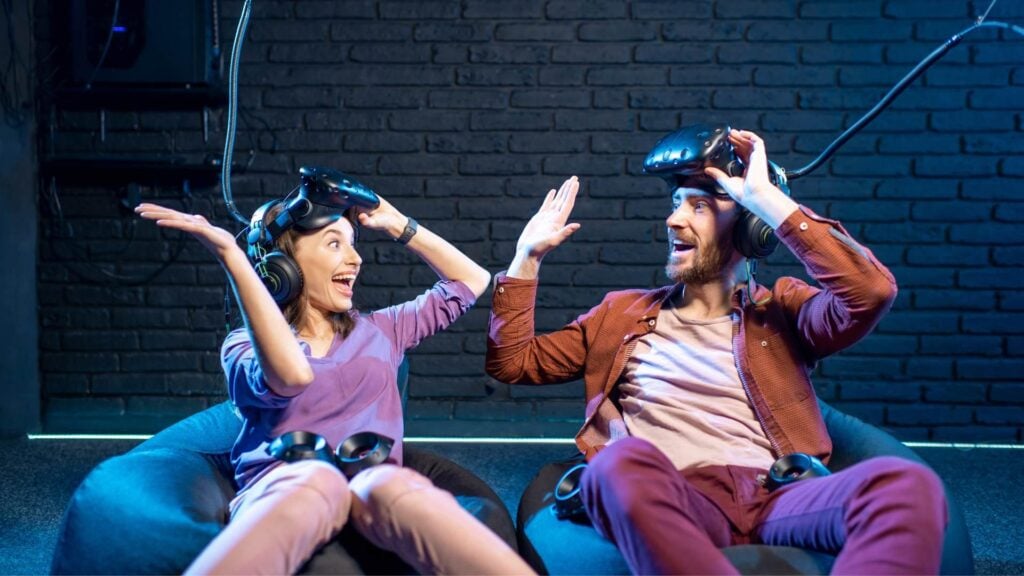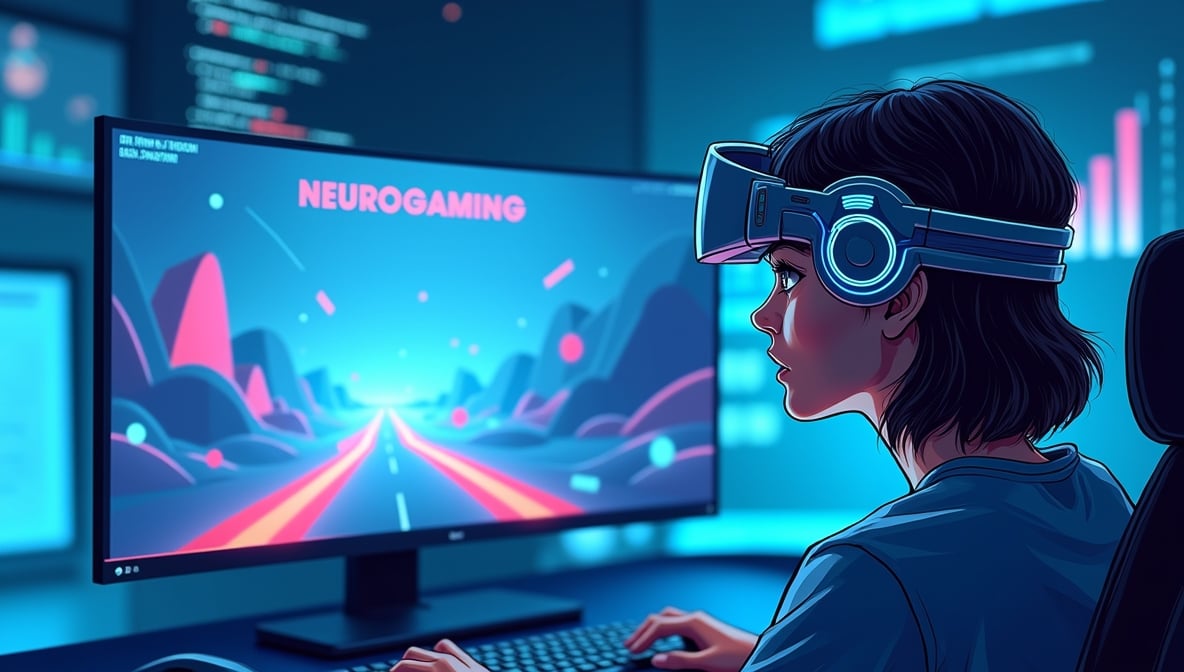1. Introduction — Thinking is the New Button Press
The first time I scored a point in a video game without touching a keyboard or controller, it felt like cheating. I sat there, wearing a sleek neurogaming headset, staring at my on‑screen avatar as it leapt over an enemy. My hands rested in my lap. The only input? Intention. What exactly is neurogaming, and how does a neurogaming headset work? At its simplest, neurogaming is gaming through brain–computer interface technology. Your thoughts, or more precisely patterns in your brainwaves, are captured by sensors and translated into commands the game understands. No thumb flicks. No button mashing. Just you, your mind, and the screen. The future of mind gaming is sure exciting.

Neurogaming Headset, Brainwave‑Controlled Video Games, The Future of Mind Gaming
Not long ago, this idea sounded like pure science fiction. Now, actual trials in labs and public demos are shrinking that distance between thought and action. In 2025, we’re seeing a quiet but meaningful shift in how “control” in gaming is defined.
2. Decoding the Brain — How Mind‑to‑Game Works
Imagine a game where “press A” doesn’t exist. Instead, small electrical fluctuations in your scalp are picked up by EEG (electroencephalography) sensors in your headset. Those signals are passed through algorithms trained to interpret patterns like focus, relaxation, or imagined movement.
How can brainwave‑controlled video games detect my thoughts or intentions? They don’t literally read what you’re thinking — no headset is out here decoding your grocery list. Instead, they map specific brainwave patterns to pre‑assigned actions, so when your brain produces a certain “signature,” the system knows to jump, shoot, or interact.
3. The Language of Brainwaves
In the context of future of mind gaming, every brain hums in a mix of frequencies, but certain ranges stand out. Alpha waves (8–12 Hz) appear when you’re relaxed. Beta waves (12–30 Hz) spike when you’re concentrating. Gamma waves (30+ Hz) are tied to problem‑solving.
Which brain signals are typically used in these systems? Most current setups focus on alpha and beta changes, as they’re easier to reliably detect through consumer‑grade headsets, though advanced prototypes are experimenting with more nuanced blends, including motor imagery signals — the same ones athletes use in mental rehearsal.

4. Training Your Mind for the Game
The first session I had felt like meditation mixed with a tutorial level. Before I could play, the game needed to “learn” my mental patterns for each action. I spent 15 minutes focusing on a floating cube, then relaxing when told, so the system could calibrate.
Do I need special training to play brain‑controlled games? A little. The headset needs calibration to you, and you’ll need practice holding certain mental states — focusing, relaxing, picturing specific movements — to trigger in‑game actions consistently. Like muscle memory for the mind.
5. Trial Runs — Neurogaming in 2025
Some of 2025’s most interesting trials show how varied this tech can be and how exciting the future of mind gaming will be:
- Neurable’s VR demos — Research prototypes have shown players controlling ships in VR through sustained focus and relaxation states.
- Valve’s BCI Experiment with SteamVR — Internal tests explored hybrid hand/brain inputs for navigating VR environments, though no public beta is currently available.
- UCLA’s NeuroGaming Lab Platformer — Lab-based side‑scrollers have demonstrated jumping via imagined movements in controlled research settings.
What are some standout real‑world trials of neurogaming in 2025? These three not only proved the tech works but showed it can integrate into genres beyond puzzle or meditation games.
Of course, prototypes are one thing — but gamers want full, retail‑ready experiences.

6. From Prototype to Playable
Most of what’s out right now are mini‑games or tech demos, though a few hybrids have slipped into early access. MindMaze Racer, for instance, lets you steer via a headset but brake with a traditional trigger — a halfway point between full neural control and old‑school gamepads.
Are there any full games available yet, or is it still experimental? Fully brain‑controlled AAA games do not exist yet; only research prototypes, tech demos, and some indie experiments are available. Think of it like VR in 2014 — intriguing, niche, but building momentum.
7. The Latency and Accuracy Question
Related to the future of mind gaming, during one test, I noticed a half‑second lag between thinking “jump” and seeing it happen. It’s subtle enough in a turn‑based game, but in action titles, that delay feels like an eternity.
How accurate and responsive are current brain–computer interfaces for gaming? Accuracy rates can reach 80–90% under ideal lab conditions for simple commands, but consumer setups are often less reliable. Environmental noise, muscle twitches, or wandering thoughts can cause missed or false inputs.
8. Barriers to Going Mainstream
Even if the tech is impressive, consumer EEG headsets can cost $400–$600, and while some research models require conductive gel, many modern headsets use dry electrodes for easier, mess-free use.
What are the major challenges — cost, comfort, health concerns? Price is high, form factors are bulky, and yes, people still ask about long‑term effects. Consumer headsets use safe, non‑invasive sensors, but extended wear comfort remains an engineering hurdle.
9. Will Controllers Become Obsolete?
Standing in a VR booth with my hands free felt oddly liberating, like gaming without gravity. Still, when rapid, precise input was needed, I found myself wishing for a button.
Could the future of mind gaming replace controllers entirely? Possibly in certain genres — slower sims, puzzle games, meditative experiences — but for twitchy shooters or complex strategy, a hybrid of neural and manual controls might be the winning combo.
10. Adoption Roadmap
Looking back at VR’s climb from novelty to mainstream gives clues for neurogaming’s arc. Prices will drop, designs will slim, and platform support will expand.
What are the realistic timelines for mainstream adoption? Expect early enthusiast adoption through 2028, with possible mass‑market penetration in the 2030s, especially if mobile and console makers bundle lighter, cheaper neuro headsets with hardware.
11. Final Word — Playing With Pure Intention
There’s something deeply human about pressing a button to make something happen. But there’s something almost magical about skipping that step entirely — about moving in sync with an avatar as if your thoughts and the game occupy the same space. The future of mind gaming isn’t about replacing what we have; it’s about expanding the ways we can connect to the worlds we play in. And if my clumsy first jumps are any sign, we’re in for a fun, if occasionally awkward, new era.
FAQs
Q1: Can neurogaming headsets be used for non‑gaming applications like art or music creation?
Absolutely — similar setups already let users compose melodies or paint in VR by focusing on shapes or tones.
Q2: Is there a difference between medical BCI devices and gaming neuro headsets?
Yes, medical BCIs often use clinical‑grade EEG setups and can be invasive in some cases, while gaming devices are consumer‑friendly and entirely non‑invasive.
Q3: Do environmental factors, like room lighting or background noise, affect brainwave gaming?
Sound and light don’t affect brainwaves directly, but they can impact your focus, which indirectly changes game performance.
Q4: Are there any esports competitions planned for brain‑controlled games?
A few exhibition matches have been staged, and organizers are eyeing dedicated BCI gaming leagues once competitive‑grade hardware matures.


